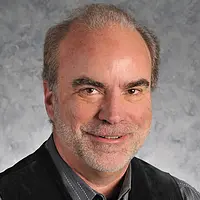As the opioid crisis continues to evolve, “stigma” is uttered frequently in conferences and meetings across the United States, particularly during events like the 2019 Rx Drug Abuse & Heroin Summit. In most cases, the call is a variation of, “we must eliminate stigma [about addiction to opioids],” followed by the exhortation that, “we must make it easier for patients and their families to talk about it in the open!”
At this year’s Rx Drug Abuse and Heroin Summit, despite the spotlight on stigma from most plenary speakers, one participant noted that aside from three Vision Sessions, there were no other mentions of “stigma” in the dozens of other session or presentation titles. In the sessions I attended, stigma was occasionally mentioned, but then speakers quickly moved on to the main points of their presentation. If eliminating stigma around opioids is as important to everyone attending the conference as they claim, then more time should be given to this topic in thoughtful presentations. As the lead change designer for the RTI Center for Communication Science and a researcher of opioid-related stigma, the rest of The Summit became a game of “spot the stigma.”
While I found few presentations about anti-stigma efforts, I did find examples of stigma hiding in plain sight, including the prevalence of stigmatizing language used by some of the speakers. The issue was so noticeable that many participants brought it to my attention in hallway discussions.
Here are a few examples of various types of stigma (self, social, courtesy and institutional) I overheard or encountered at The Summit:
- Residents claiming their community is not doing enough to make substance use programs more affordable and accessible, and imploring them to find new ways to improve treatment for substance use.
- Medical examiners in rural communities not putting opioid overdose as the cause of death so as not to embarrass the family and add to their difficulties.
- A person in recovery describing her experiences of stigma on-the-job (in an addiction treatment center!), attending Alcoholics Anonymous/Narcotics Anonymous meetings as a medications for opioid use disorder (MOUD) user, and the challenges of helping other Partners in Recovery cope with the everyday experiences of stigma.
- Leaders professing that “we want to mainstream the practice of treating addictions in the U.S.”
- Speakers encouraging “positive, judgment-free encounters by first responders.”
- Hearing that 4 out of 5 U.S. treatment programs do not prescribe any Food and Drug Administration-approved types of medically assisted treatment despite the evidence supporting their benefits.
- The Drug Enforcement Administration restricting the use of telemedicine for the treatment of opioid use disorder with buprenorphine.
- Communities attempting to deploy emergency department warm handoff programs, but stigma and other barriers continuing to inhibit their widespread implementation.
My experience from Rx Summit made it clear that we all agree on the need to eliminate opioid stigma in order to effectively fight the opioid epidemic. However, we are lacking a common understanding of what “stigma” is and the many ways it can manifest. If leaders in the field cannot articulate what stigma means, it’s easy to see why so many “anti-stigma” efforts aren’t able to make a significant impact on reducing stigma.
If leaders in the field cannot articulate what stigma means, it’s easy to see why so many 'anti-stigma' efforts aren’t able to make a significant impact on reducing stigma.
As researchers, practitioners and policymakers concerned with the opioid crisis, we have learned a great deal about stigma over the years. There is an evidence base for both articulating and addressing it. Unfortunately, many people would rather not face those in-depth discussions. Stigma is not something a person with an addiction—or their family or health care provider—suffers from. Stigma is an active process in which people stereotype, judge, distance themselves from, and discriminate against others. If everyone recognizes the importance of addressing stigma, then more efforts in a national forum, such as the Rx Summit, should confront the issue head-on.
We are all involved in the stigmatization of people who use opioids - even treatment providers, family members, and people in recovery. For leaders in the industry who are working to address the crisis, it is even more vital that we use language free of stigma to set the tone for the rest of society. Realizing the role we all may be playing in the perpetuation of opioid stigma from the front lines is an important step in reversing it.
Because beating stigma is bigger than just “talking about it.”
